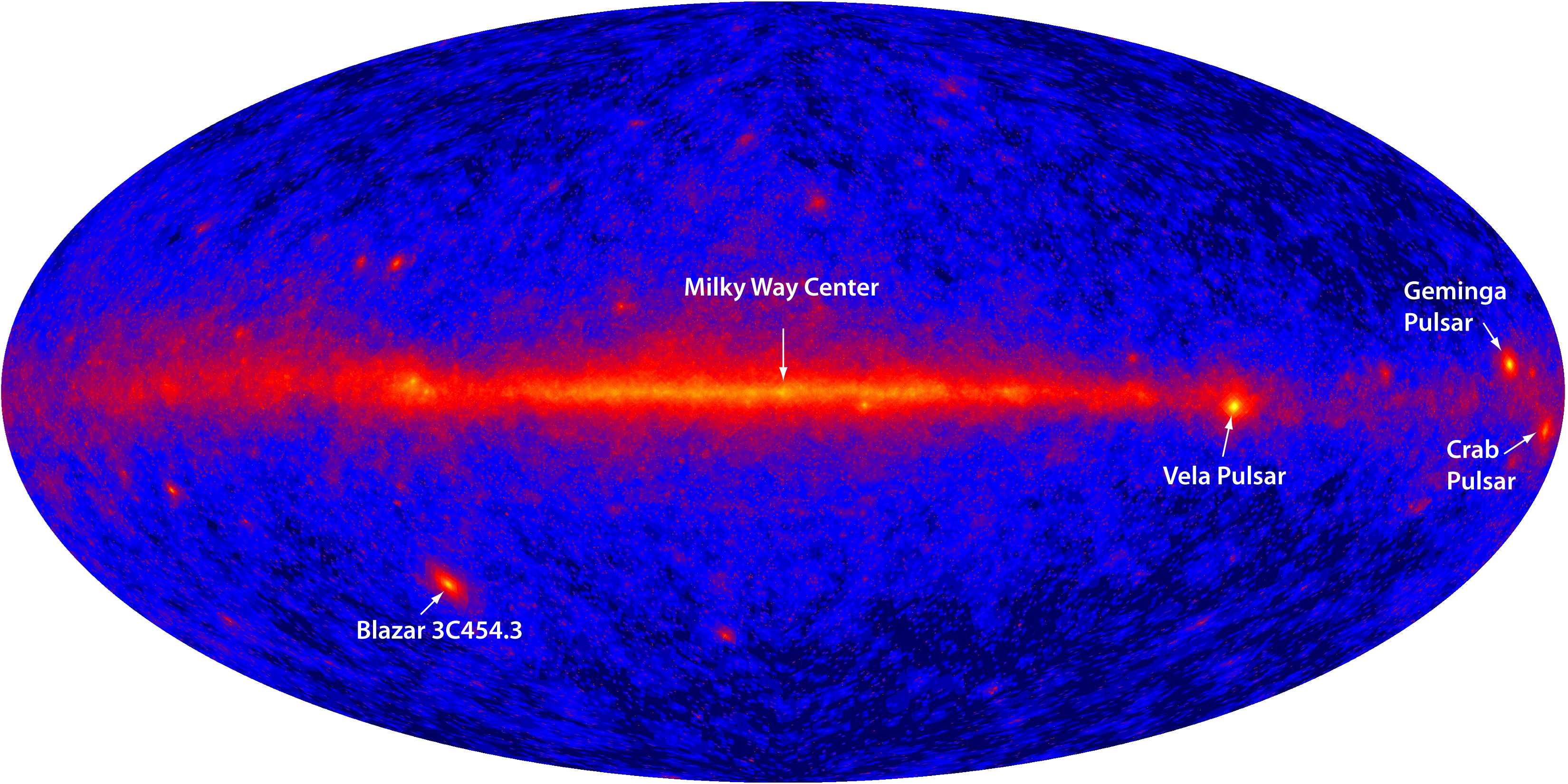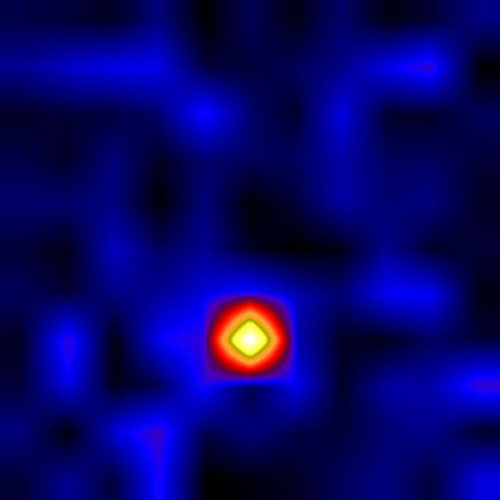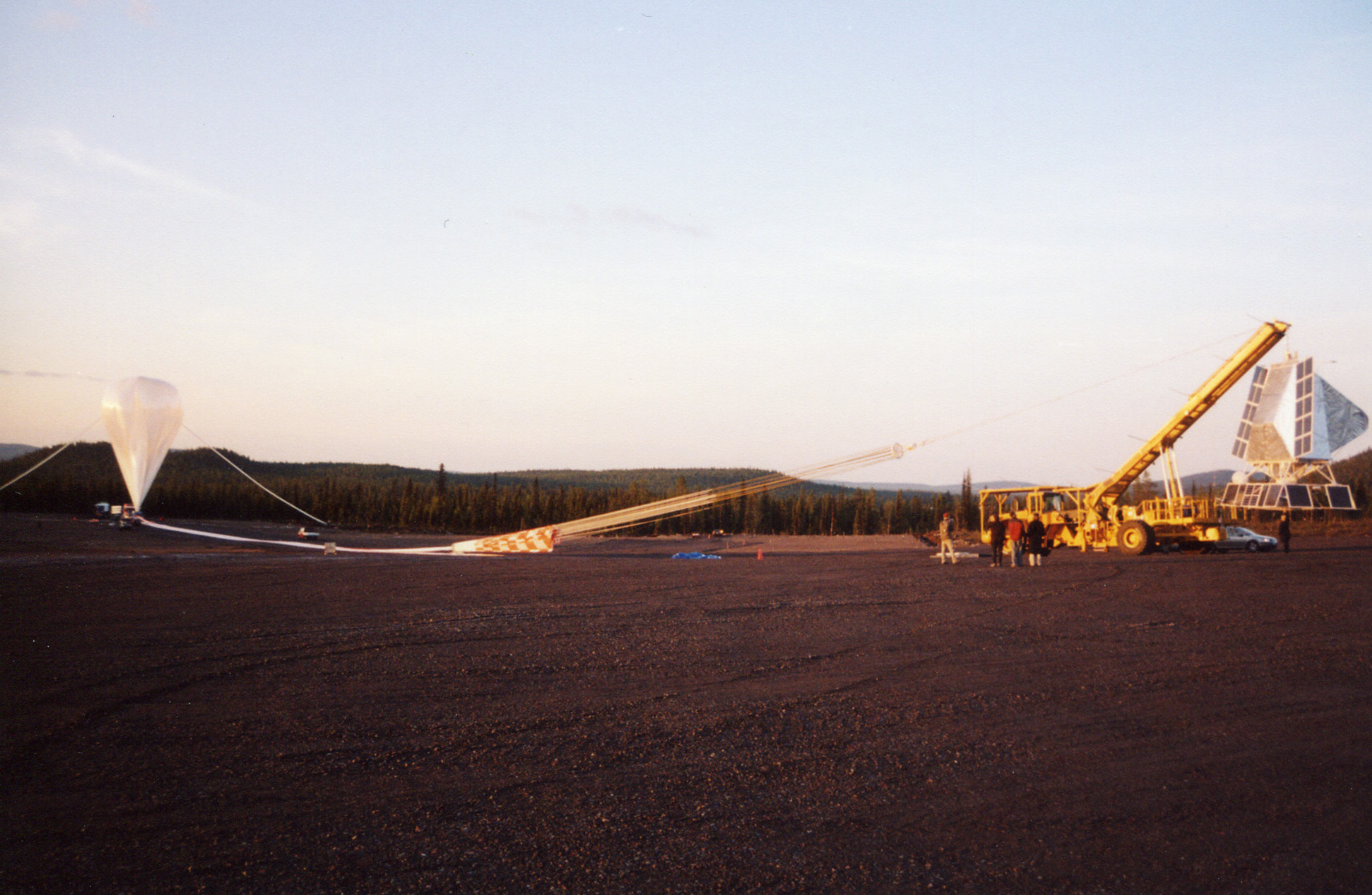|
PoGOLite
PoGOLite (The Polarised Gamma-ray Observer) is a balloon-borne astroparticle physics experiment which is to measure polarisation in hard X-rays and soft gamma-rays. It is sensitive to photons with an energy range of 25-80 keV. PoGOLite contains 217 phoswich detector cells (PDC) which are surrounded by a ring of side anticoincidence shield (SAS) detectors. PoGOLite Pathfinder mission The pathfinder instrument containing 61 PDCs and 30 SAS detectors was scheduled to be launched from the Esrange facility in northern Sweden during summer 2011. The flight was to be the first westward circumpolar balloon flight in the northern hemisphere in 20 years and was expected to take 17–25 days. The main targets of the pathfinder experiment are the Crab Pulsar and the high-mass X-ray binary system Cygnus X-1, which are two of the brightest objects in the energy range of PoGOLite. The mission was launched at 1:57am Thursday 7 July 2011 (23h57 GMT Wednesday 6 July 2011) from Esrange, Sweden. H ... [...More Info...] [...Related Items...] OR: [Wikipedia] [Google] [Baidu] |
Balloon
A balloon is a flexible bag that can be inflated with a gas, such as helium, hydrogen, nitrous oxide, oxygen, and air. For special tasks, balloons can be filled with smoke, liquid water, granular media (e.g. sand, flour or rice), or light sources. Modern day balloons are made from materials such as rubber, latex, polychloroprene, or a nylon fabric, and can come in many different colors. Some early balloons were made of dried animal bladders, such as the pig bladder. Some balloons are used for decorative purposes or entertaining purposes, while others are used for practical purposes such as meteorology, medical treatment, military defense, or transportation. A balloon's properties, including its low density and low cost, have led to a wide range of applications. The rubber balloon was invented by Michael Faraday in 1824, during experiments with various gases. He invented them for use in the lab. Applications Play Decoration Balloons are used for decorating birthday par ... [...More Info...] [...Related Items...] OR: [Wikipedia] [Google] [Baidu] |
Astroparticle Physics
Astroparticle physics, also called particle astrophysics, is a branch of particle physics that studies elementary particles of astronomical origin and their relation to astrophysics and cosmology. It is a relatively new field of research emerging at the intersection of particle physics, astronomy, astrophysics, detector physics, relativity, solid state physics, and cosmology. Partly motivated by the discovery of neutrino oscillation, the field has undergone rapid development, both theoretically and experimentally, since the early 2000s. History The field of astroparticle physics is evolved out of optical astronomy. With the growth of detector technology came the more mature astrophysics, which involved multiple physics subtopics, such as mechanics, electrodynamics, thermodynamics, plasma physics, nuclear physics, relativity, and particle physics. Particle physicists found astrophysics necessary due to difficulty in producing particles with comparable energy to those found in ... [...More Info...] [...Related Items...] OR: [Wikipedia] [Google] [Baidu] |
Phoswich Detector
Phoswich detectors were developed to detect low-intensity, low-energy gamma rays, X-rays, as well as alpha and beta particles efficiently in a higher-energy ambient background. Some detector designs can measure and separately identify all energies simultaneously. A phoswich ("phosphor sandwich") is a combination of scintillators A scintillator is a material that exhibits scintillation, the property of luminescence, when excited by ionizing radiation. Luminescent materials, when struck by an incoming particle, absorb its energy and scintillate (i.e. re-emit the absorbe ... with dissimilar pulse shape characteristics optically coupled to each other and to a common PMT (or PMTs). Pulse shape analysis distinguishes the signals from the two scintillators, identifying in which scintillator the event occurred. In 2010 development of a monolithic phoswich sensor technology was announced, departing from the discrete designs. This novel development, termed the ''continuous'' phoswic ... [...More Info...] [...Related Items...] OR: [Wikipedia] [Google] [Baidu] |
Esrange
Esrange Space Center (short form Esrange) is a rocket range and research centre located about 40 kilometers east of the town of Kiruna in northern Sweden. It is a base for scientific research with high-altitude balloons, investigation of the aurora borealis, sounding rocket launches, and satellite tracking, among other things. Located 200 km north of the Arctic Circle and surrounded by a vast wilderness, its geographic location is ideal for many of these purposes. Esrange was built in 1964 by ESRO, the ''European Space Research Organisation'', which later became European Space Agency by merging with ELDO, the European Launcher Development Organisation. The first rocket launch from Esrange occurred on 19 November 1966. In 1972, ownership was transferred to the newly started Swedish Space Corporation. History In the 1960s Esrange was established as an ESRO sounding rocket launching range located in Kiruna (Sweden). This location was chosen because it was generally agreed tha ... [...More Info...] [...Related Items...] OR: [Wikipedia] [Google] [Baidu] |
Sweden
Sweden, formally the Kingdom of Sweden,The United Nations Group of Experts on Geographical Names states that the country's formal name is the Kingdom of SwedenUNGEGN World Geographical Names, Sweden./ref> is a Nordic country located on the Scandinavian Peninsula in Northern Europe. It borders Norway to the west and north, Finland to the east, and is connected to Denmark in the southwest by a bridgetunnel across the Öresund. At , Sweden is the largest Nordic country, the third-largest country in the European Union, and the fifth-largest country in Europe. The capital and largest city is Stockholm. Sweden has a total population of 10.5 million, and a low population density of , with around 87% of Swedes residing in urban areas in the central and southern half of the country. Sweden has a nature dominated by forests and a large amount of lakes, including some of the largest in Europe. Many long rivers run from the Scandes range through the landscape, primarily ... [...More Info...] [...Related Items...] OR: [Wikipedia] [Google] [Baidu] |
Crab Pulsar
The Crab Pulsar (PSR B0531+21) is a relatively young neutron star. The star is the central star in the Crab Nebula, a remnant of the supernova SN 1054, which was widely observed on Earth in the year 1054.Supernova 1054 – Creation of the Crab Nebula Discovered in 1968, the was the first to be connected with a . [...More Info...] [...Related Items...] OR: [Wikipedia] [Google] [Baidu] |
High-mass X-ray Binary
X-ray binaries are a class of binary stars that are luminous in X-rays. The X-rays are produced by matter falling from one component, called the ''donor'' (usually a relatively normal star), to the other component, called the ''accretor'', which is very compact: a neutron star or black hole. The infalling matter releases gravitational potential energy, up to several tenths of its rest mass, as X-rays. (Hydrogen fusion releases only about 0.7 percent of rest mass.) The lifetime and the mass-transfer rate in an X-ray binary depends on the evolutionary status of the donor star, the mass ratio between the stellar components, and their orbital separation. An estimated 1041 positrons escape per second from a typical low-mass X-ray binary. Classification X-ray binaries are further subdivided into several (sometimes overlapping) subclasses, that perhaps reflect the underlying physics better. Note that the classification by mass (high, intermediate, low) refers to the optically vi ... [...More Info...] [...Related Items...] OR: [Wikipedia] [Google] [Baidu] |
Cygnus X-1
Cygnus X-1 (abbreviated Cyg X-1) is a galactic X-ray source in the constellation Cygnus and was the first such source widely accepted to be a black hole. It was discovered in 1964 during a rocket flight and is one of the strongest X-ray sources detectable from Earth, producing a peak X-ray flux density of (). It remains among the most studied astronomical objects in its class. The compact object is now estimated to have a mass about 21.2 times the mass of the Sun and has been shown to be too small to be any known kind of normal star or other likely object besides a black hole. If so, the radius of its event horizon has "as upper bound to the linear dimension of the source region" of occasional X-ray bursts lasting only for about 1 ms. Cygnus X-1 belongs to a high-mass X-ray binary system, located about 2.22 kiloparsecs from the Sun, that includes a blue supergiant variable star designated HDE 226868, which it orbits at about 0.2 ... [...More Info...] [...Related Items...] OR: [Wikipedia] [Google] [Baidu] |
Nikkaluokta
Nikkaluokta () is a Swedish Sami village in Norrbotten County. The village belongs to Gällivare Municipality, bordering Kiruna Municipality, the closest urban area some 60 kilometers away. In its vicinity lie the areas of two Sami communities, Laevas and Girjas, who still herd semi-domesticated reindeer in the region. Nikkaluokta has a mountain lodge, complete with a small grocery store and restaurant, a chapel, and, during the summer months, a commercial helicopter base. It is a popular starting point for several hiking and skiing trails in the Kebnekaise area, including the notable Kungsleden. On foot, it takes around five hours to travel the 19 kilometer distance between the two mountain lodges in Nikkaluokta and Kebnekaise. Nikkaluokta is sited in the centre of three valleys, where the tarmac road from Kiruna Municipality ends. To travel farther, trails and mountain paths of varying size and condition must be used. Nikkaluokta Bay in Lake Ladtjojaure is also the starting po ... [...More Info...] [...Related Items...] OR: [Wikipedia] [Google] [Baidu] |
Balloons For X-ray Astronomy
High-altitude balloons are crewed or uncrewed balloons, usually filled with helium or hydrogen, that are released into the stratosphere, generally attaining between above sea level. In 2002, a balloon named BU60-1 reached a record altitude of . The most common type of high-altitude balloons is weather balloons. Other purposes include use as a platform for experiments in the upper atmosphere. Modern balloons generally contain electronic equipment such as radio transmitters, cameras, or satellite navigation systems, such as GPS receivers. These balloons are launched into what is termed "near space", defined as the area of Earth's atmosphere between the Armstrong limit ( above sea level), where pressure falls to the point that a human being cannot survive without a pressurised suit, and the Kármán line ( above sea level), where astrodynamics must take over from aerodynamics in order to maintain flight. Due to the low cost of GPS and communications equipment, high-altitude balloon ... [...More Info...] [...Related Items...] OR: [Wikipedia] [Google] [Baidu] |
Astroparticle Physics
Astroparticle physics, also called particle astrophysics, is a branch of particle physics that studies elementary particles of astronomical origin and their relation to astrophysics and cosmology. It is a relatively new field of research emerging at the intersection of particle physics, astronomy, astrophysics, detector physics, relativity, solid state physics, and cosmology. Partly motivated by the discovery of neutrino oscillation, the field has undergone rapid development, both theoretically and experimentally, since the early 2000s. History The field of astroparticle physics is evolved out of optical astronomy. With the growth of detector technology came the more mature astrophysics, which involved multiple physics subtopics, such as mechanics, electrodynamics, thermodynamics, plasma physics, nuclear physics, relativity, and particle physics. Particle physicists found astrophysics necessary due to difficulty in producing particles with comparable energy to those found in ... [...More Info...] [...Related Items...] OR: [Wikipedia] [Google] [Baidu] |



